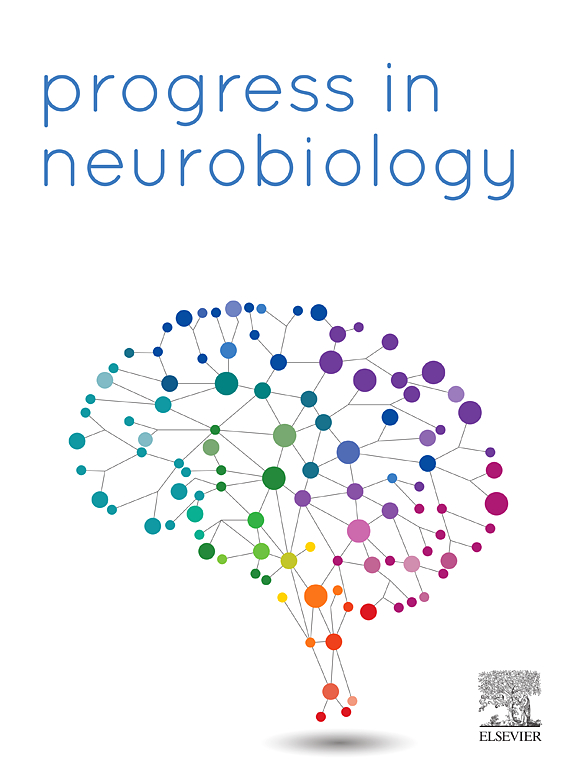Surround modulation is predominantly orientation-unspecific in macaque V1
IF 6.1
2区 医学
Q1 NEUROSCIENCES
引用次数: 0
Abstract
Surround modulation is a fundamental property of V1 neurons, playing critical roles in stimulus integration and segregation. It is believed to be orientation-specific, as neurons’ responses at preferred orientations are suppressed more by iso-oriented surrounds than by cross-oriented surrounds. Here, we investigated an alternative hypothesis that surround modulation is primarily orientation-unspecific, in that the observed “orientation-specific” surround effects actually reflect overall gain changes that affect neurons tuned to all orientations. We employed two-photon calcium imaging to compare V1 population orientation tuning functions under iso- and cross-surround modulation in awake, fixating macaques. While confirming “orientation-specific” surround suppression in individual neurons, our analysis of the population orientation tuning functions revealed that iso-surrounds induce a general orientation-unspecific suppression across all orientation-tuned neurons, plus weak orientation-specific suppression to neurons tuned to the center stimulus orientation. Furthermore, cross-surrounds mainly reduce orientation-unspecific suppression by scaling up responses of all orientation-tuned neurons. These findings suggest a model of population gain control where surround stimuli mostly scale the responses of the neuronal population. Further population coding analyses supported this conclusion, demonstrating that surround suppression leads to degraded target orientation information at least partially due to a reduced number of contributing neurons with diverse orientation preferences.
在猕猴V1中,环绕调制主要是非定向的。
环绕调制是V1神经元的一种基本特性,在刺激整合和分离中起着关键作用。它被认为是定向特异性的,因为神经元在首选方向上的反应更多地受到同向包围而不是交叉包围的抑制。在这里,我们研究了另一种假设,即环绕调制主要是非定向的,因为观察到的“定向特异性”环绕效应实际上反映了影响神经元调谐到所有方向的总体增益变化。我们使用双光子钙成像比较了醒着注视的猕猴在等环绕和交叉环绕调制下V1种群方向调节功能。在确认单个神经元的“定向特异性”包围抑制的同时,我们对群体定向调谐函数的分析表明,等包围诱导所有定向调谐神经元的一般定向非特异性抑制,以及对调谐到中心刺激定向的神经元的弱定向特异性抑制。此外,交叉环绕主要通过放大所有定向调谐神经元的反应来减少定向非特异性抑制。这些发现提出了一种群体增益控制模型,其中周围刺激主要是衡量神经元群体的反应。进一步的群体编码分析支持了这一结论,表明包围抑制导致目标定向信息的退化,至少部分原因是具有不同定向偏好的神经元数量减少。
本文章由计算机程序翻译,如有差异,请以英文原文为准。
求助全文
约1分钟内获得全文
求助全文
来源期刊

Progress in Neurobiology
医学-神经科学
CiteScore
12.80
自引率
1.50%
发文量
107
审稿时长
33 days
期刊介绍:
Progress in Neurobiology is an international journal that publishes groundbreaking original research, comprehensive review articles and opinion pieces written by leading researchers. The journal welcomes contributions from the broad field of neuroscience that apply neurophysiological, biochemical, pharmacological, molecular biological, anatomical, computational and behavioral analyses to problems of molecular, cellular, developmental, systems, and clinical neuroscience.
 求助内容:
求助内容: 应助结果提醒方式:
应助结果提醒方式:


